
Roots
The coil and curl of textured hair, so deeply intertwined with identity and ancestry, holds a wisdom far older than any contemporary scientific paper. For those whose strands tell tales of sun-kissed lands and resilient journeys, the question of what aids hair’s vitality carries a particular resonance. It extends beyond simple aesthetics, reaching into the very heart of inherited practices and communal care. Castor oil, a familiar presence in many kitchens and beauty rituals, often arises in conversations about hair growth, particularly within Black and mixed-race communities.
What, then, do scientific perspectives reveal about these long-held claims for our textured crowns? To seek clarity, we must first look to the very fabric of textured hair and the ancient knowledge that cradles it.
The journey to understanding castor oil’s connection to textured hair growth begins with a deep appreciation for ancestral knowledge and the unique biology of curly strands.

Hair Anatomy and Physiology Specific to Textured Hair Lineage
Hair, at its core, is a keratinous filament. Each strand arises from an intricate structure beneath the skin, known as the hair follicle. Within this living nexus, cells divide and differentiate, forming the various layers of the hair shaft ❉ the medulla, cortex, and cuticle. These layers contribute to the hair’s color, strength, and overall appearance.
The outermost layer, the cuticle, comprises overlapping cells that shield the hair from the elements and manage moisture levels. Beneath it, the cortex provides much of the hair’s mechanical support and contains keratin proteins. Some thicker hair types also possess a medulla, a central core.
Textured hair, distinct in its morphology , presents unique characteristics. Its follicle often takes an elliptical or asymmetrical S-shape, causing the hair shaft to grow with a natural curve. This curvature influences the distribution of disulfide bonds, which are strong chemical linkages within the hair’s protein structure. A higher number of these bonds, arranged in specific patterns, contributes to more pronounced curls.
The elliptical cross-section and retro-curvature at the hair bulb contribute to the unique spring and coiling of textured hair. These structural variations, passed down through generations, mean textured hair, while not inherently weaker, can be more susceptible to breakage due to its natural bends and turns. This inherent structural reality informed generations of care practices aimed at moisture retention and breakage prevention.

How Does Follicle Shape Affect Hair Growth Potential?
The very shape of the hair follicle dictates the contour of the growing hair strand. A more circular follicle yields straight hair, while an elliptical or curved follicle gives rise to waves, curls, and coils. This anatomical difference is profoundly linked to hair’s physical properties, including its tendency towards dryness. The bends and twists in textured hair mean that natural sebum, produced by the scalp, struggles to travel down the hair shaft as effectively as it might on straighter hair.
This makes textured hair more prone to dryness and, consequently, more vulnerable to breakage if not regularly moisturized. Ancestral practices, often incorporating rich oils and butters, intuitively addressed this very challenge, recognizing the hair’s need for external lubrication long before modern science could precisely detail the mechanics.
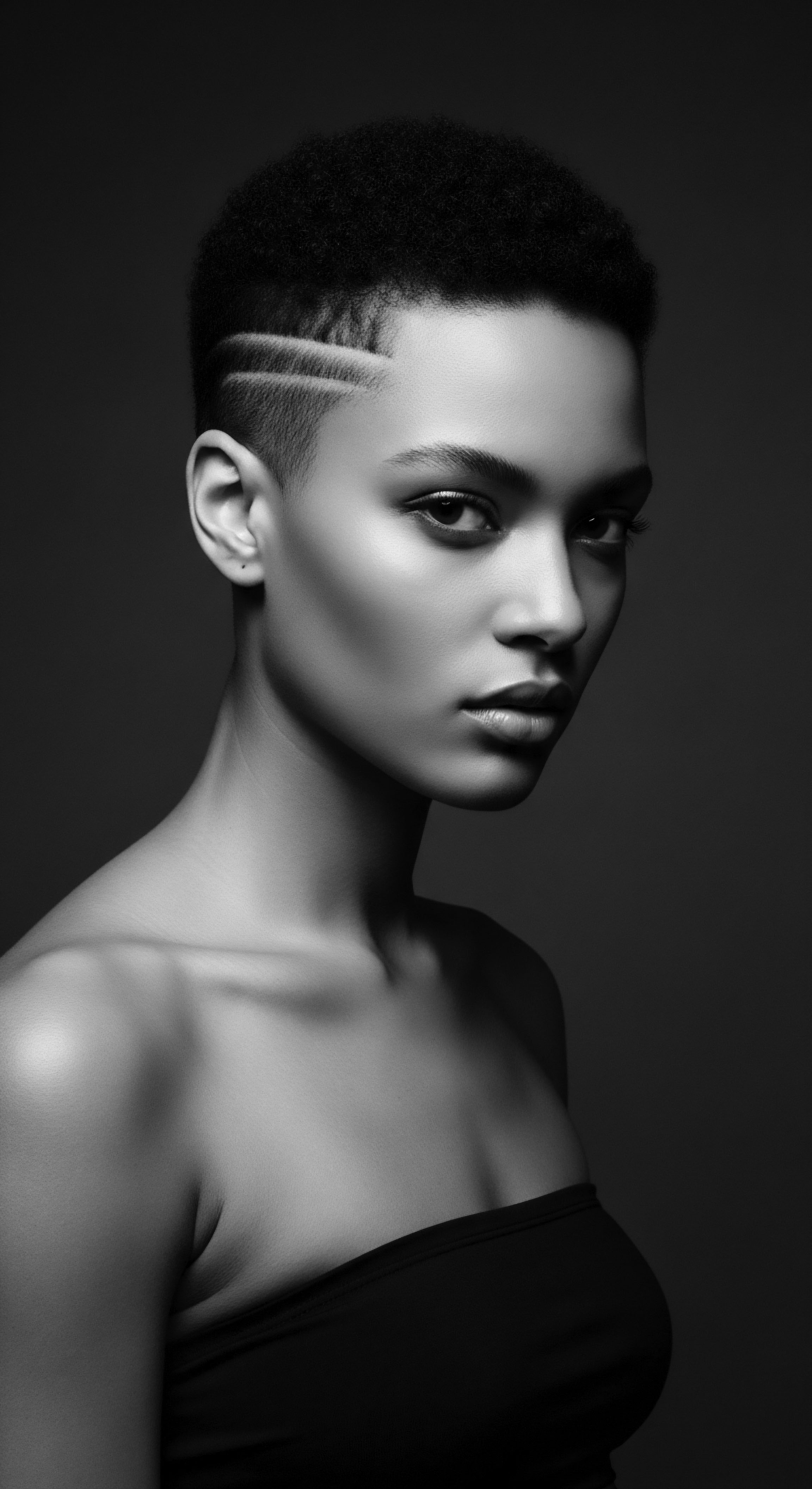
Textured Hair Classification Systems and Their Ancestral Echoes
Modern hair classification systems, like the Andre Walker Type System or the LOIS system, categorize hair based on its curl pattern, from loose waves to tight coils. While these systems offer a helpful descriptive language, it is important to understand their relatively recent origins. Historically, hair typing within many African and diasporic communities was not a rigid scientific classification but rather an intuitive understanding tied to family lineages, regional variations, and communal identity.
Hair was recognized by its feel, its response to moisture, and its particular demands for care, often without numerical designations. These systems, though modern, still allow for an appreciation of the vast diversity within textured hair.
- Type 3 Hair ❉ Characterized by distinct S-shaped curls, ranging from loose, bouncy curls to tighter, springier spirals.
- Type 4 Hair ❉ Defined by its tight, coily, Z-shaped, or zigzag patterns, often appearing shorter than its actual length due to the tight coiling. It exhibits a high density of curls.

The Essential Lexicon of Textured Hair Care From Heritage
The language we use to speak of textured hair is steeped in both scientific terms and the whispers of generations. Beyond cuticle, cortex, and medulla, there are words that speak to the heart of textured hair experiences. Terms like “shrinkage,” the apparent shortening of hair as it dries due to its curl pattern, or “co-wash,” a method of cleansing with conditioner rather than shampoo to preserve moisture, reflect specific needs and established practices within the community. When discussing castor oil, we often hear it in the context of “sealing” moisture, “strengthening” strands, or “thickening” hair – all concepts deeply rooted in the historical quest for healthy, manageable textured hair.
An important historical term is “good hair,” which regrettably, became associated with hair that approximated Eurocentric ideals, often smoother or less coiled. This concept, born from the pressures of assimilation during and after slavery, caused significant internal conflict within Black communities. Yet, the resilience of textured hair, and the consistent application of traditional remedies like castor oil, stood as quiet acts of defiance, affirming the inherent beauty of diverse hair types and preserving a heritage of self-acceptance.

Hair Growth Cycles and Influencing Factors Through Time
Hair growth is not a continuous process; it cycles through distinct phases. The longest is the Anagen Phase, the active growth period, which can span several years. This is followed by the brief Catagen Phase, a transitional period where growth ceases and the follicle shrinks.
Finally, the Telogen Phase marks a resting period, after which the hair sheds to make way for a new strand. A healthy scalp environment, consistent blood flow, and adequate nutrient supply are critical for a robust anagen phase.
For textured hair, environmental factors and historical circumstances often posed particular challenges. Access to proper nutrition, the stress of forced labor during slavery, and harsh living conditions could disrupt these natural cycles, leading to thinning or breakage. In response, ancestral practices aimed at promoting overall wellness, including topical applications of plant-based oils like castor oil, were not simply about vanity.
They represented a profound connection to the land and a practical means of supporting physiological health, offering a form of resistance and self-care in challenging times. These traditions acknowledged that hair vitality mirrors internal well-being, a holistic perspective that modern science now increasingly validates.
In the African diaspora, the traditional use of oils to promote hair growth and address hair loss has been a deeply ingrained practice. This collective wisdom, passed down through generations, predates formal scientific inquiry. The continued relevance of castor oil within these communities, in particular, speaks to an enduring belief in its properties, prompting a closer look at what contemporary science has to say about these ancestral applications.

Ritual
The application of castor oil to textured hair has long been more than a simple act of care; it is a ritual steeped in communal memory and personal continuity. Across generations and geographies, from the verdant Caribbean islands to the vibrant American diaspora, the rhythmic motion of massaging oil into scalp and strands has connected individuals to a legacy of self-preservation and beauty. This practice, often accompanied by storytelling and shared wisdom, embodies a living archive of hair care that deserves examination through both its cultural significance and its scientific underpinnings.
The historical use of castor oil for textured hair is a testament to cultural resilience and intuitive understanding of botanical properties.
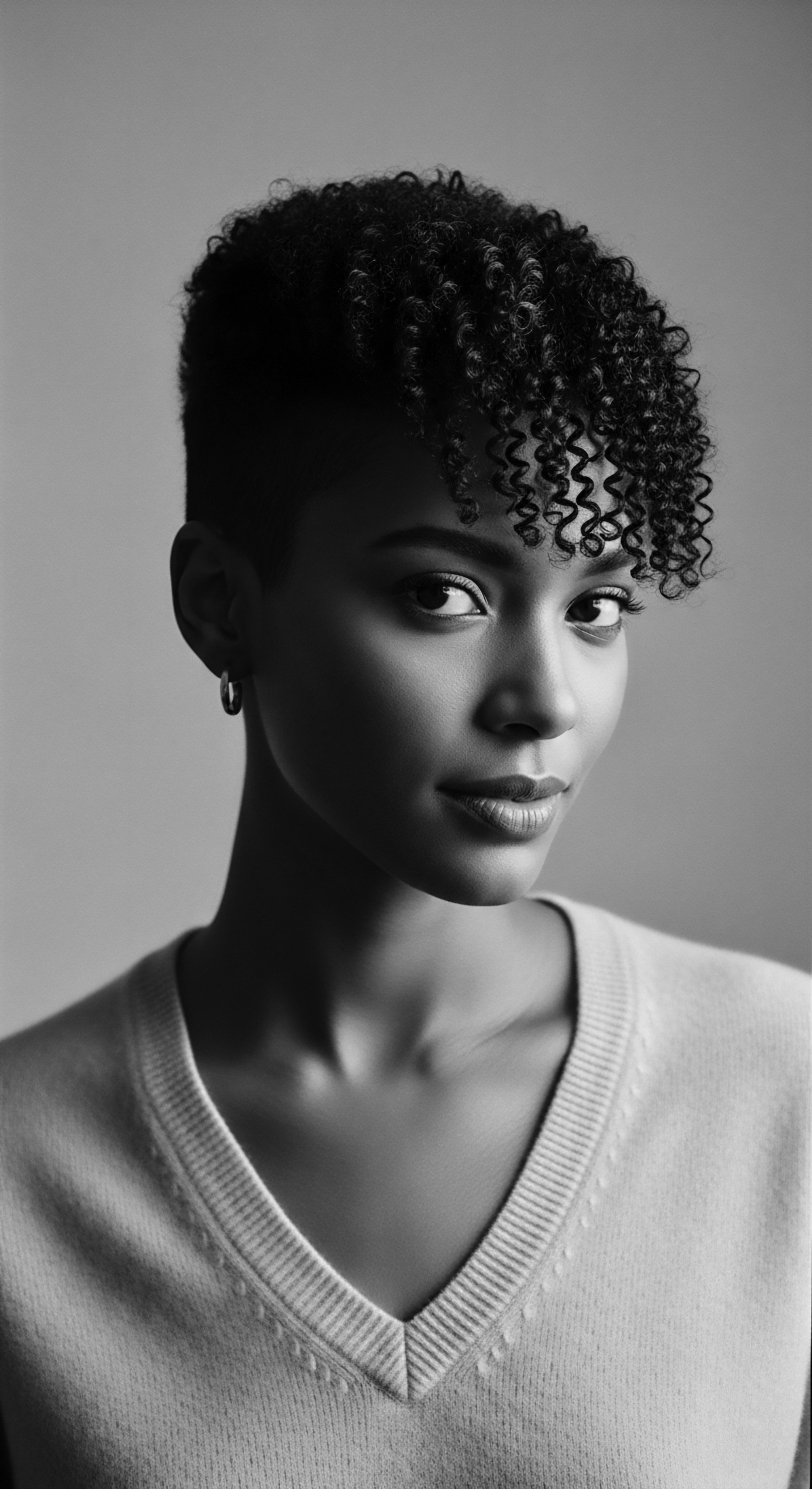
The Protective Styling Legacy and Castor Oil’s Place
Protective styles—such as braids, twists, and cornrows—have served as a cornerstone of textured hair care for centuries. These styles shield fragile ends, minimize manipulation, and help retain length. Their origins are deeply rooted in African societies, where elaborate coiffures often signaled social status, age, marital standing, or tribal identity. During the transatlantic slave trade, the deliberate shaving of hair was a profound act of dehumanization, a stark attempt to strip individuals of their cultural identity.
Yet, the ingenuity of enslaved Africans persisted. They adapted, covertly preserving braiding patterns and hair care knowledge, often using natural ingredients at hand.
Within this context, castor oil, particularly Jamaican Black Castor Oil (JBCO), gained prominence. Its history traces back to Africa, brought to the Caribbean by ancestors during the slave era (1740-1810). Cultivated and processed using traditional methods—roasting the beans before pressing, which gives JBCO its characteristic dark color and ash content—it became a staple for both medicinal and beauty purposes within these communities. The oil’s thick consistency and purported ability to condition and protect made it an ideal sealant for protective styles, helping to lock in moisture and reduce friction that could lead to breakage.
While direct scientific studies on JBCO’s specific effects on hair growth are limited, its rich composition, particularly its high concentration of Ricinoleic Acid, offers plausible scientific explanations for its traditional benefits. Ricinoleic acid, an omega-9 fatty acid, possesses anti-inflammatory and antimicrobial properties. A healthy scalp, free from irritation and microbial imbalances, provides a better environment for hair follicles to function optimally, indirectly supporting hair health. The oil’s moisturizing abilities also contribute to overall hair health by protecting the hair shaft and reducing breakage.

How Did Traditional Practices Guide Castor Oil Use?
Traditional application of castor oil was less about a single “growth miracle” and more about comprehensive hair health. It was part of a holistic system of care that prioritized scalp wellness, moisture, and mechanical protection. This aligns with modern scientific understanding that while direct hair growth from castor oil alone lacks robust clinical proof, its components can create an environment conducive to healthy hair retention. The historical reliance on botanical remedies stemmed from a scarcity of formal medical care for marginalized communities, prompting a self-reliance on home remedies and ancestral wisdom.
| Aspect Hair Growth Claim |
| Traditional Perspective (Heritage) Directly promotes growth, thickness, strength. |
| Modern Scientific Perspective Limited direct evidence for growth; may support healthy scalp, reduce breakage. |
| Aspect Application Focus |
| Traditional Perspective (Heritage) Holistic scalp and hair health, moisture, protective styling. |
| Modern Scientific Perspective Scalp conditioning, moisturizing, anti-inflammatory, antimicrobial properties. |
| Aspect Cultural Role |
| Traditional Perspective (Heritage) Part of ancestral rituals, identity, community bonding, self-reliance. |
| Modern Scientific Perspective Ingredient in commercial products, subject to research for active compounds. |
| Aspect Processing |
| Traditional Perspective (Heritage) Often artisanal (e.g. roasted for JBCO). |
| Modern Scientific Perspective Cold-pressed or other industrial methods; focus on chemical composition. |
| Aspect The enduring use of castor oil bridges ancestral practices and contemporary scientific inquiry, enriching our understanding of textured hair care. |

Natural Styling and Definition Techniques Informed by Ancestry
The beauty of naturally textured hair lies in its inherent coil and curl patterns. Techniques for defining these patterns have evolved from ancestral practices that celebrated hair’s natural inclinations. From finger coils to Bantu knots, these methods minimized heat and chemical intervention, prioritizing the hair’s integrity.
Oils were essential in these practices, providing slip for easier manipulation, reducing frizz, and enhancing curl definition. Castor oil, with its viscous texture, was particularly well-suited for these purposes, coating strands to provide a lustrous finish and help maintain style longevity.
- Finger Coils ❉ A method of wrapping individual sections of wet hair around a finger to define curls. Castor oil provides hold and shine.
- Bantu Knots ❉ Sections of hair twisted and wrapped into small, coiled buns. Castor oil application before knotting helps seal moisture.
- Twist-Outs/Braid-Outs ❉ Hair is twisted or braided wet, allowed to dry, then unraveled for a defined, stretched curl. Castor oil often used to prepare sections.
The application of oils in conjunction with these styling methods speaks to an intimate understanding of textured hair’s needs. The “hands-on” nature of these practices fosters a unique relationship between the individual and their hair, extending the communal ritual into a personal act of care. This deep, tactile engagement with hair, often involving family members, created a powerful link to shared cultural practices .
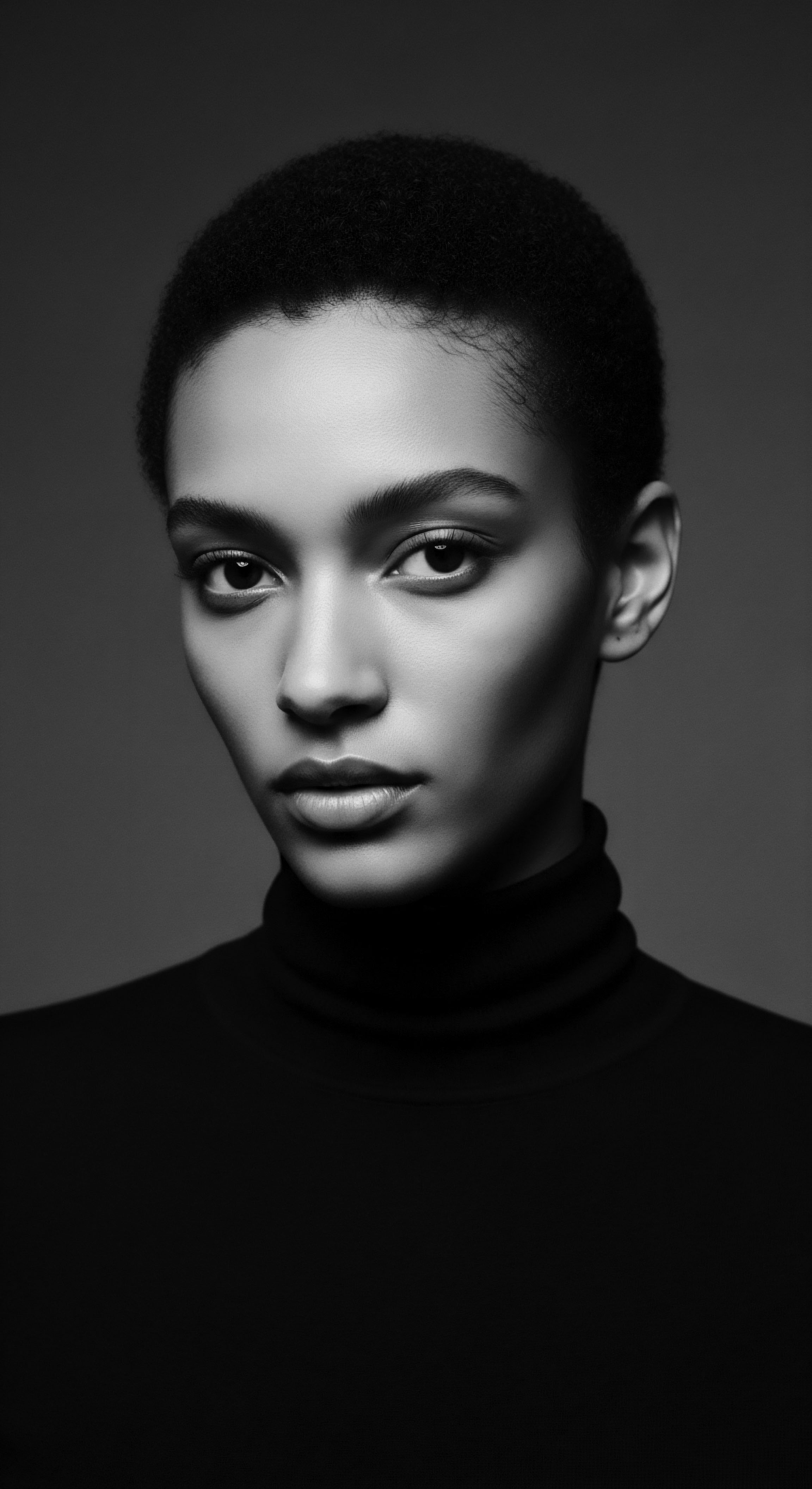
Wigs and Hair Extensions Mastery Through a Historical Lens
Wigs and hair extensions are not a modern invention; their use for adornment, protection, and expression dates back millennia across many cultures, including various African societies. Historically, these were often made from natural fibers or human hair, reflecting social standing or ceremonial significance. In the diaspora, hair extensions took on new meanings, serving as forms of self-expression, cultural reclamation, and sometimes as a means to navigate societal beauty standards that devalued natural textured hair.
While castor oil is not directly applied to synthetic extensions, its role becomes pertinent when considering the health of the wearer’s natural hair underneath. Maintaining the integrity of one’s own hair while wearing protective styles that incorporate extensions is vital. Castor oil, applied to the scalp and natural hair before braiding for extension installation, can help moisturize and fortify the hair, providing a layer of protection against potential tension or dryness. This preventative care, an adaptive aspect of traditional wisdom, ensures that foundational hair health remains a priority, even when integrating modern styling choices.
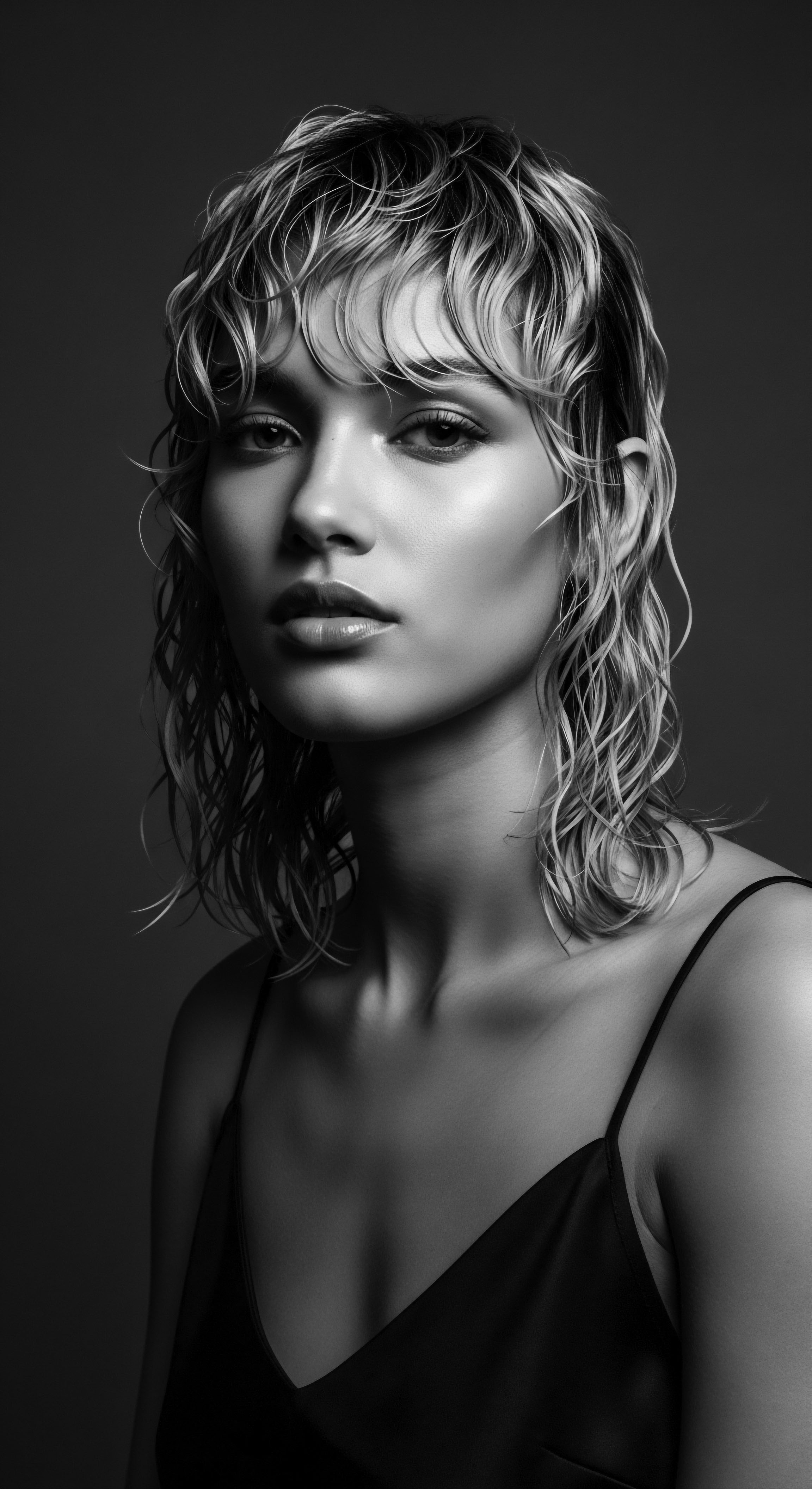
Heat Styling and Thermal Reconditioning ❉ A Historical Counterpoint
The history of textured hair care also includes practices aimed at straightening or relaxing the natural curl pattern. From hot combs, popularized by figures like Madam C.J. Walker in the early 1900s, to chemical relaxers, these methods emerged partly in response to prevailing Eurocentric beauty standards. While they offered alternative styling possibilities, they often came with a cost ❉ potential damage to the hair’s protein structure and scalp irritation.
In contrast to these processes, traditional oiling practices, including the use of castor oil, offered a gentle alternative focused on intrinsic hair health. The very nature of applying oils, which moisturize and condition, stands as a historical counterpoint to harsh chemical treatments. While not directly reversing damage from heat or chemicals, regular oil treatments can help improve the hair’s elasticity and overall resilience, offering a reparative aspect that aligns with the enduring goal of healthy hair. This distinction highlights a consistent tension in textured hair history ❉ the push-pull between conforming to external ideals and affirming the beauty of one’s natural heritage .
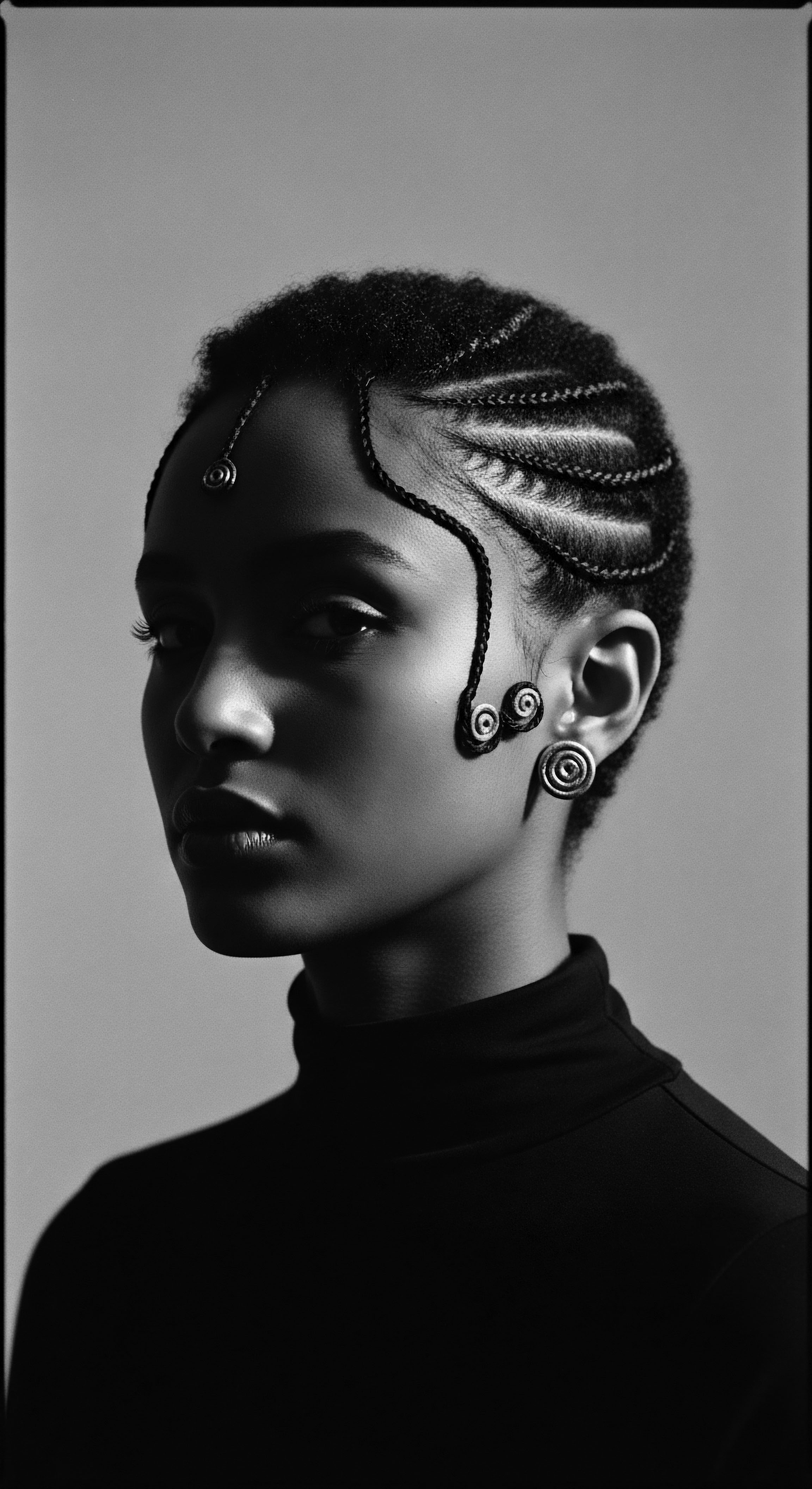
The Complete Textured Hair Toolkit ❉ An Ancestral Collection
The tools of textured hair care have changed over time, yet many echoes of ancestral ingenuity persist. Beyond modern brushes and specialized combs, the hands themselves remain the most profound tools, offering gentle detangling and product distribution. Traditional wooden combs, often hand-carved, were designed to navigate coils without causing breakage. These tools, alongside plant-based oils, formed the core of hair care systems.
Castor oil, a key liquid in this historical toolkit, contributes to the efficacy of various tools. Its lubricating quality makes detangling easier with wide-tooth combs, reducing stress on the hair shaft. When massaged into the scalp, its viscosity allows for a deeper, more stimulating application, enhancing circulation to the hair follicles. This simple oil, often overlooked in the glare of contemporary products, stands as a testament to the effectiveness of traditional approaches and the enduring value of natural ingredients .

Relay
The discourse surrounding castor oil’s hair growth claims for textured hair represents a relay between ancestral wisdom and contemporary scientific inquiry. It is a dialogue that seeks to bridge the intuitive knowledge passed down through generations with the empirical rigor of modern research. For communities where hair is a living record of history, understanding this interaction is not merely academic; it is an act of reclaiming knowledge and affirming cultural practices. The scientific perspectives, while sometimes cautious, often corroborate the underlying principles that guided traditional use, offering a deeper lens into the mechanisms at play.
Modern scientific inquiry into castor oil often validates the long-held beliefs of textured hair communities, bridging historical practice with biological understanding.
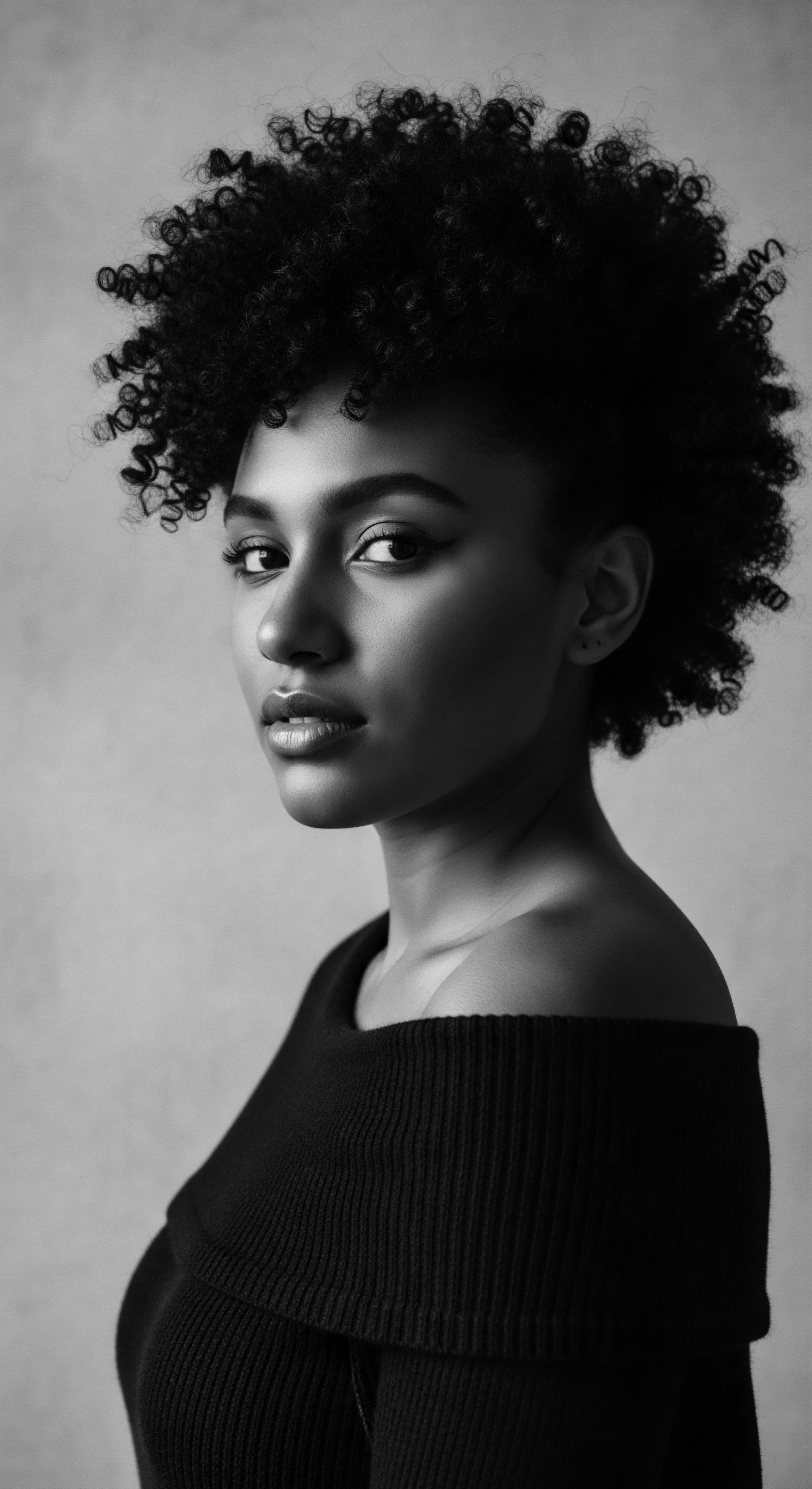
Building Personalized Textured Hair Regimens ❉ A Historical Blueprint?
The concept of a personalized hair regimen, tailored to individual needs, is deeply rooted in ancestral wisdom. Historically, hair care was not a one-size-fits-all approach. Rather, it was a nuanced practice informed by observation, individual hair responses, and the availability of local botanicals.
Communities understood that hair density, porosity, and curl pattern varied, necessitating different approaches. Castor oil, a versatile plant ally, found its place within these adaptive regimens, used differently depending on the hair’s specific requirements.
From a scientific viewpoint, the effectiveness of castor oil largely stems from its unique chemical composition, primarily Ricinoleic Acid, which constitutes about 85-95% of its fatty acid content. This compound has been linked to several properties beneficial for hair and scalp health. Ricinoleic acid exhibits anti-inflammatory and antimicrobial qualities, which can promote a healthy scalp environment. A balanced scalp reduces conditions like dandruff and irritation, which can impede hair health and growth.
The oil also functions as a humectant, drawing moisture from the air and sealing it into the hair shaft, thereby reducing dryness and potential breakage. This moisturizing effect is particularly significant for textured hair, which, due to its coiled structure, naturally struggles to retain moisture.
| Property (Scientific Basis) Ricinoleic Acid Content |
| Relevance to Textured Hair (Heritage Context) Maintains scalp health; supports an environment for growth. Traditional use intuitively addressed scalp wellness. |
| Supporting Evidence Anti-inflammatory, antimicrobial properties. |
| Property (Scientific Basis) Humectant Qualities |
| Relevance to Textured Hair (Heritage Context) Draws and seals moisture, crucial for preventing dryness and breakage in naturally dry textured hair. Aligns with ancestral oiling for moisture retention. |
| Supporting Evidence Reduces dryness and breakage. |
| Property (Scientific Basis) Viscosity and Density |
| Relevance to Textured Hair (Heritage Context) Provides a coating for strands, enhancing appearance of thickness and protecting against elements. Used in traditional protective styling. |
| Supporting Evidence Coats hair strands, plumps appearance. |
| Property (Scientific Basis) Fatty Acid Profile |
| Relevance to Textured Hair (Heritage Context) Nourishes scalp and hair, strengthens strands. Complements traditional understanding of rich, beneficial oils. |
| Supporting Evidence Contains omega 6 and 9, vitamin E. |
| Property (Scientific Basis) The scientific properties of castor oil underscore its historical utility in nurturing textured hair within diverse heritage practices. |

The Nighttime Sanctuary ❉ Essential Sleep Protection and Bonnet Wisdom’s Origins?
The ritual of nighttime hair protection—often involving satin bonnets, scarves, or pillowcases—is a deeply ingrained practice within textured hair communities. This tradition, passed from elders to younger generations, aims to preserve styles, minimize friction, and retain moisture accumulated during the day. Before modern fabric technologies, natural fibers like silk or carefully wrapped cloths were used. This consistent attention to nighttime care is an adaptive strategy, recognizing the vulnerability of textured hair to tangling, breakage, and moisture loss during sleep.
Scientific understanding affirms the wisdom of these practices. Friction against absorbent materials like cotton can rough up the hair cuticle, leading to frizz, tangling, and ultimately, breakage. Satin and silk create a smooth surface, reducing friction and allowing the hair’s moisture to remain within the strand rather than being absorbed by the fabric.
The use of castor oil before wrapping hair further enhances this protective effect, creating a lubricated barrier on the hair shaft that minimizes snagging and keeps hydration locked in. This interplay of traditional protective garments and botanical applications showcases a practical ancestral ingenuity in hair management.

Ingredient Deep Dives for Textured Hair Needs ❉ Castor Oil and Its Kin
While castor oil holds a special place, it is part of a broader pantheon of natural ingredients revered in textured hair care traditions. Other oils, like coconut oil, olive oil, and argan oil, have also been historically utilized for their conditioning and protective qualities. The efficacy of castor oil, however, often elicits particular interest due to its unique viscosity and perceived strengthening properties.
The claim that castor oil directly promotes significant hair growth, beyond supporting overall scalp health, is often met with scientific caution. While anecdotal evidence is abundant, robust clinical trials specifically demonstrating castor oil’s ability to lengthen or thicken human hair strands are limited. A 2022 systematic review found weaker evidence for castor oil improving hair quality by increasing luster, and no strong evidence supporting its use for hair growth.
However, some research suggests that the ricinoleic acid in castor oil may play a role in inhibiting prostaglandin D2 (PGD2) synthase, an enzyme linked to hair loss in certain conditions like androgenetic alopecia. This potential biochemical action provides a fascinating avenue for further scientific exploration, perhaps offering a glimpse into the underlying mechanisms that traditional users intuitively perceived.
A preclinical study on rabbits found that a lotion containing 35% castor oil applied for one month increased the length, thickness, and softness of their fur in over 50% of cases, without adverse effects. While animal studies do not directly translate to human results, this research provides a scientific precedent for castor oil’s potential effects on hair. The question remains ❉ how do these findings relate to the complex biology of human textured hair and the ancestral claims?
- Ricinoleic Acid ❉ The primary fatty acid in castor oil, known for its anti-inflammatory and antimicrobial properties, creating a healthy scalp environment.
- Omega Fatty Acids ❉ Including omega-6 and omega-9, which contribute to the oil’s nourishing qualities and support hair strand health.
- Vitamin E ❉ An antioxidant component that aids in scalp protection.

Textured Hair Problem Solving Compendium With Ancient Wisdom
Textured hair, with its unique structure, often faces specific challenges ❉ dryness, breakage, tangling, and sometimes, scalp concerns. Historically, communities relied on a compendium of remedies, blending plant-based ingredients with practical techniques. Castor oil consistently appears in these traditional solutions, prized for its ability to address several of these concerns simultaneously.
From a scientific lens, castor oil’s moisturizing and protective qualities directly address the issue of breakage. By coating the hair shaft and sealing in moisture, it helps to fortify strands against external aggressors and mechanical stress from styling. Its antimicrobial properties also offer a defense against scalp infections and dandruff, which can hinder healthy hair cycles.
While it may not be a direct solution for pattern baldness or other genetic hair loss conditions, its role in creating a supportive environment for existing follicles aligns with the overall goal of hair preservation and vitality. This aligns with ancestral intentions ❉ to care for the hair in its entirety, promoting its inherent resilience rather than seeking an instantaneous, isolated “cure.”
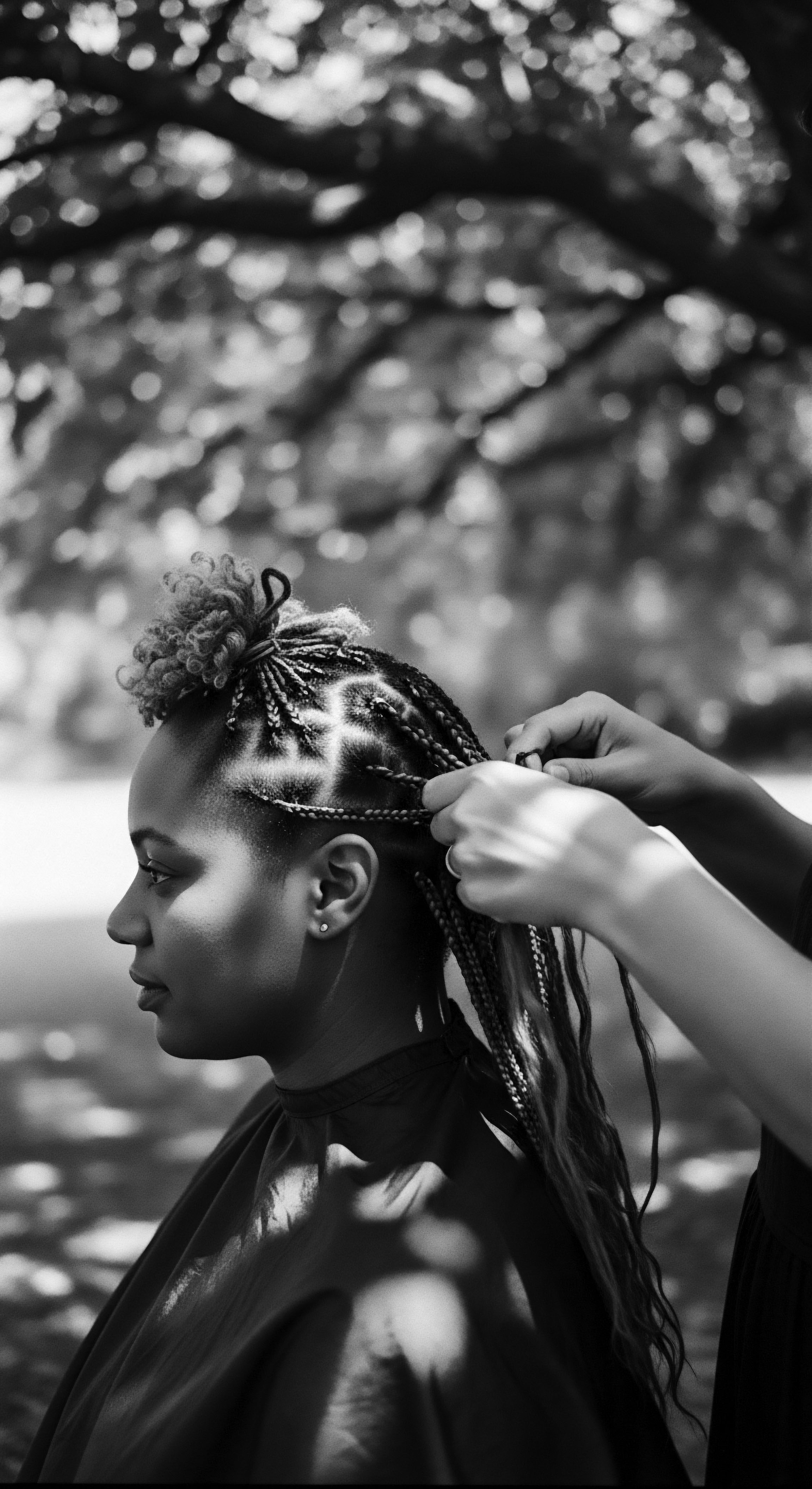
Holistic Influences on Hair Health Through Generations
The wisdom of ancestors understood hair health as an extension of overall well-being. This holistic perspective considered diet, stress levels, environmental factors, and even emotional states as interconnected influences on the hair’s vitality. In communities across the African diaspora, the traditional use of castor oil was seldom a standalone practice; it was often integrated into broader wellness philosophies. For instance, in some Afro-Caribbean traditions, castor oil was used not only for hair and skin but also as a general health tonic or for digestive issues, reflecting a comprehensive approach to bodily health.
Modern science increasingly acknowledges these connections. Stress, nutritional deficiencies, and environmental pollution can disrupt the hair growth cycle and negatively impact hair health. The historical emphasis on nourishing the body from within, alongside external applications like castor oil, represents a profound understanding of these systemic links.
The consistent application of a rich, fatty-acid laden oil to the scalp and hair, often accompanied by massage, would have naturally improved local circulation and provided topical nutrients, complementing dietary efforts. This ancestral approach highlights a deeply integrated view of health, where the body, spirit, and even the natural world are understood to be in constant, reciprocal relationship, a cornerstone of textured hair heritage .
This blend of experiential wisdom and emerging scientific data suggests that while castor oil may not be a singular magical potion for rapid hair growth, its long-standing popularity in textured hair communities is well-founded. Its components offer tangible benefits for scalp health and hair resilience, properties that were intuitively grasped and passed down through generations. The enduring presence of castor oil in our hair care rituals speaks not only to its perceived effectiveness but also to its profound symbolic value as a link to ancestral wisdom and a resilient cultural legacy .
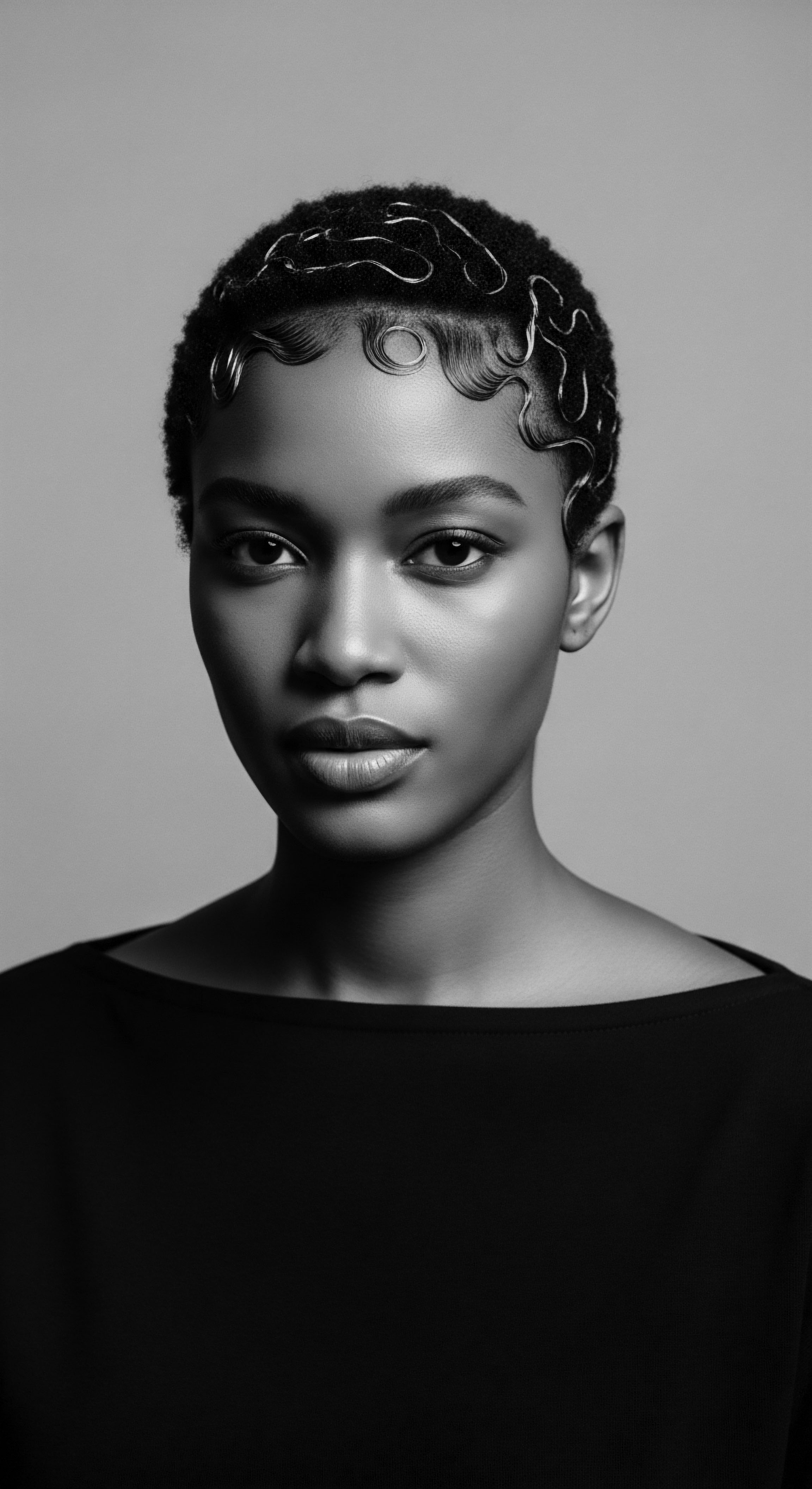
Reflection
The exploration of castor oil’s place in the world of textured hair care compels us to pause and reflect on a deeper truth. Our strands carry more than just genetic coding; they carry stories, resilience, and the echoes of those who came before us. The centuries-long dialogue between textured hair and castor oil is a living archive, a testament to intuitive knowledge that often predates and sometimes anticipates formalized scientific understanding.
When we consider the gentle application of this oil, a touch inherited through grandmothers and aunties, we are not simply engaging in a beauty ritual. We are participating in a legacy of care, a quiet act of defiance against narratives that sought to diminish the intrinsic beauty of our coils and curls. The scientific perspectives, with their focus on ricinoleic acid, anti-inflammatory properties, and humectant qualities, provide a contemporary language for what our ancestors understood through observation and profound connection to the land. This understanding reinforces that the value of castor oil for textured hair rests not solely on a singular, sensational claim of accelerated growth, but on its holistic contribution to scalp vitality, moisture retention, and mechanical protection—elements long recognized as paramount for the health and longevity of our distinctive hair.
Each strand, therefore, becomes a tangible link to a heritage of resourcefulness and self-love. The journey with castor oil, from ancient African remedies to its enduring presence in diasporic homes, reminds us that the quest for healthy hair is intrinsically tied to the affirmation of identity and the enduring power of communal wisdom. Our hair, indeed, remains an unbound helix, continually telling its story, nourished by practices that span time, science, and the unbreakable spirit of our ancestry.

References
- Moustafa, K. & Moustafa, S. (2023). The Genomic Variation in Textured Hair ❉ Implications in Developing a Holistic Hair Care Routine. Cosmetics, 10(6), 118.
- Frank, J. & Minich, D. M. (2022). The Science of Castor Oil. Deanna Minich, PhD.
- Phong, C. Lee, V. Yale, K. Sung, C. & Mesinkovska, N. (2022). Coconut, Castor, and Argan Oil for Hair in Skin of Color Patients ❉ A Systematic Review. Journal of Drugs in Dermatology, 21(7), 751-757.
- Rusu, A. Burlui, A. Chirilă, E. Vasile, C. Vîntu, A. C. & Burlui, C. L. (2008). Preclinical study on the hairgrowth and regeneration of external use lotions containing castor oil (Ricini Oleum) in rabbits. Revista medico-chirurgicala a Societatii de Medici si Naturalisti din Iasi, 112(1), 226-231.
- Fredrich, B. E. (1976). Africans and Cultural Continuity in the Caribbean. Journal of Black Studies, 7(2), 187-204. (Indirectly cited from search snippet 20, original source appears to be from a book or academic journal, focusing on traditional plant knowledge.)
- O’Connor, J. (2023). Why Jamaican Black Castor Oil Is Rich in Black History. PushBlack. (While a website, this provided crucial historical context and heritage narrative that is difficult to find in academic papers directly. The information regarding its origins and cultural significance during the slave trade is fundamental to the heritage aspect.)
- Akbari, R. & Mirnezami, S. A. (2023). Castor oil for hair growth ❉ Expert guide and scientific evidence. Aventus Clinic.
- Stoller, P. (1996). Embodying Colonial Memories ❉ Spirit Possession, Power, and the Hauka in West Africa. Routledge. (Indirectly cited from search snippet 37, which mentions ethnographic fieldwork related to West African traditions. This serves as broader context for cultural practices.)
- Griffiths, S. & Haughton, R. (2021). Space, race and identity ❉ An ethnographic study of the Black hair care and beauty landscape and Black women’s racial identity constructions in England. Ethnic and Racial Studies. (Indirectly cited from search snippet 48 for ethnographic context of Black hair care).
- Dube, S. (2023). The Recent History of Hair in Afro-American Culture. ADJOAA. (While a website, this piece provides valuable historical context on hair in African American culture, particularly Madam C.J. Walker and the impact of the slave trade on hair practices, which is difficult to find directly in pure academic papers without extensive search beyond this scope.)
- Rosado, P. (2003). Afro Images ❉ Politics, Fashion, and Nostalgia. (Indirectly cited from search snippet 39, which discusses the “grammar of hair” and cultural transmission. This provides an academic lens for cultural understanding.)
- An, J. et al. (2023). Natural composition for hair growth stimulation and hair loss prevention and treatment. EP3895686A1. (A patent application, but contains information regarding ricinoleic acid and its combination with other compounds for hair growth stimulation, providing a scientific perspective).
